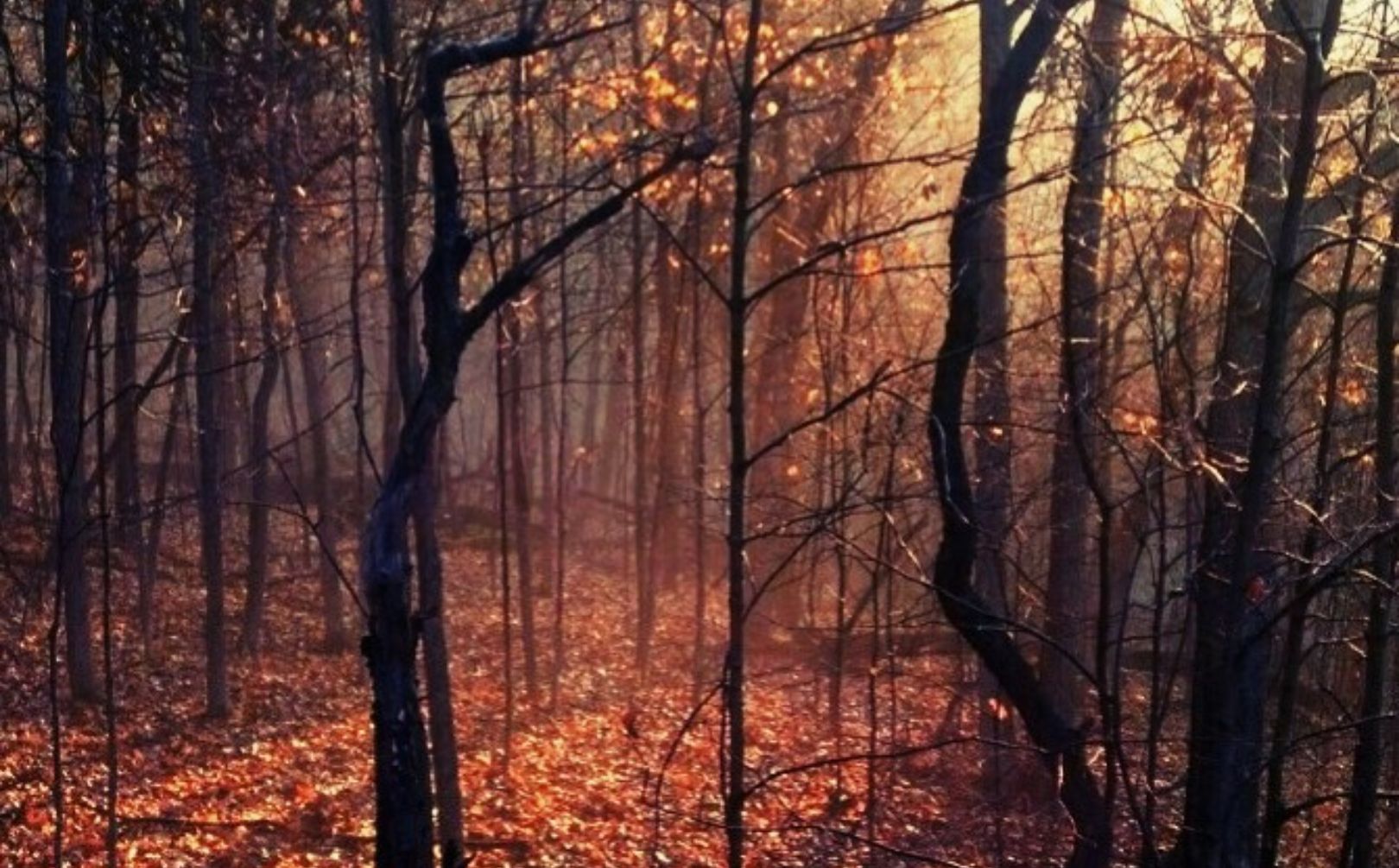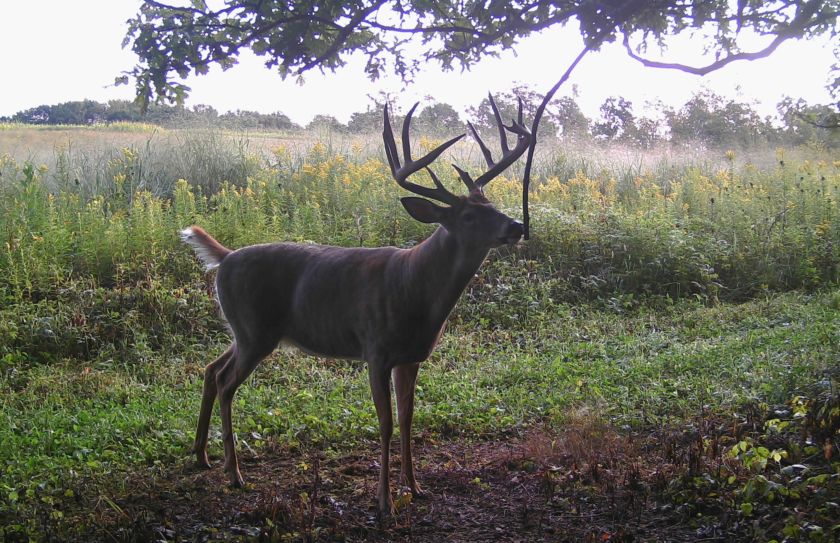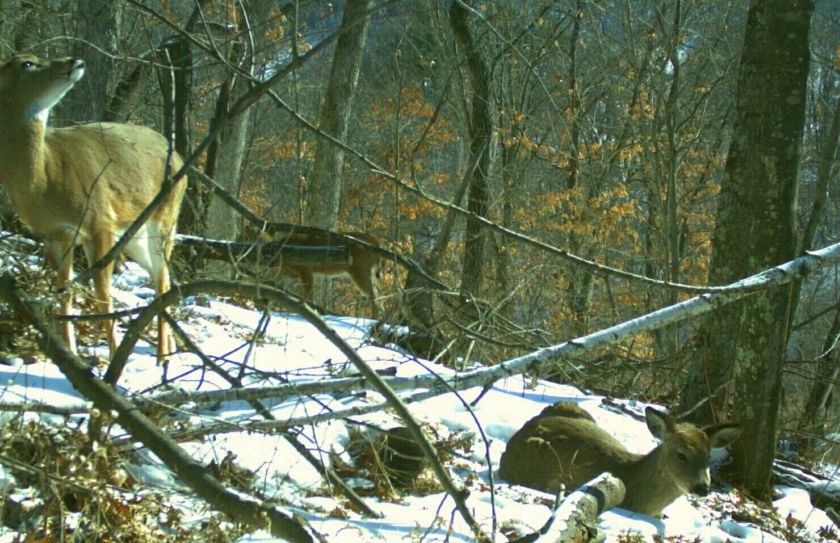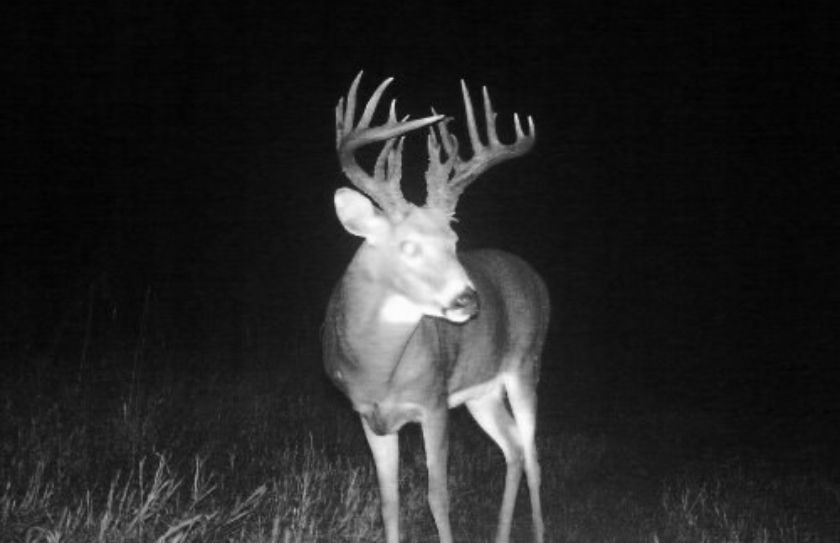
The 2005 November morning was picture perfect but it still didn't share any hints of the upcoming opportunity for a hunt of a lifetime. An icy Northwest breeze was driving the coolest temperatures since late October, while stars dotted the sky on the peaceful approach across the pasture. I was looking forward to settling into a relaxing wait until daybreak and after several days of unseasonably warm weather, I was ready!
Eventually the sounds of the morning whitetail woods began to break and as the sun climbed, so did the temperatures.
At the same time, the twisted oaks located on the ridge high above began to dance with the increasing winds. It was quiet at my stand as I stared westerly up the ridge. No windat first. In fact to feel no wind was a little odd. I turned and took a glance at the pasture to my east and a little dose of reality hit me in the form of a slight uphill breeze. My scent was being carried up the ridge in front, and across the bench to the west where I was hoping a cruising monarch would offer me a shot. Stinking hills!
What was happening is that the wind was blowing out of he northwest high above and across the ridge top in front of me, to behind me, and then tailing back up hill, carrying my scent with me as the morning thermals continued to climb. It wasnt shaping up to be a hunt of a lifetime, but instead yet another lesson in hunting within the hills and valleys of southwest WI.I recently was biking with a buddy around that same area, and he mentioned, Make the hills your friendas I was gasping for air towards the top of a mile long climb. The morning I have been describing above happened several years ago and at that point I was still learning the influence of the winds while in hill country. Currently I still have a long way to go and I am STILL learning, but I have at least learned within just the last few years to begin making the hills my friend when it comes to deer hunting.If you follow along with me we will get back to the morning that hadnt yet revealed its potential hunt of a lifetime, but first Im going to share with you a few of the influences of wind in and around the property I have become intimately familiar with over the past 10 hunting seasons.
The Crest, #1
The stand location north of area #1 is approximately 300 above the road below, which also happens to be one of my parking areas. This spot has accounted for a 193# 13 point 4 year old, as well as an outstanding collection of daytime mature buck photos.The bedding areas are located on the steep drop in elevation facing the road to the east, which sets up perfectly for an approach by traveling west up the valley south of #6, and then taking an easterly turn to access the stand on the opposite side of the ridge from any potentially bedded deer, with southerly winds blowing off of the point to the north. During a morning hunt and rising thermals this is simply as safe a stand location that you can get.
The Horse Pasture Stand, #2
What can you say about a stand that has produced 7 bucks averaging over 4 years of age? WOW! From 120 to 173 and all increments of 10 in between this stand has produced, to say the least. Bedding areas are tucked on either side and unless you get an east or north wind in the morning weve found you are pretty safe. The morning thermals typically go straight up the hill to the point above and weve learned to keep our scent above the deer.At the same time, what a poor evening stand! Bedding areas are located on either side, and the food is 250 in elevation above. You can count on the doe family groups traveling straight up to food in the evening, and the bucks to follow. In the morning those mature bucks are cruising between bedding areas and looking for does making it a completely different hunt. Hunt High in the morning does not apply here.
The 15 Point Stand, #3
What makes this stand pretty cool is that it works best with a strong northerly morning wind. You can count on the wind to come over the top from the north as you face uphill, and hit you in the back of the neck with a slight breeze.If its windy and nasty in the morning the deer are off of the fields above, and you can access by walking straight from the east while staying high, and the simply dropping south 100 in elevation down to the stand. Once you get to the stand the conditions are typically calm and quiet. This stand is too difficult to use in the evening because the thermals fall below the stand, right into bedded deer that want to move up and past the stand to the north.
The Trail Stand, #4
This stand has accounted for a 3 year old, and an opportunity at a 5 year old. The good thing is that deer do not bed around the stand, instead bedding on either side with 75 yards. The stand is on a slight bench that acts as crossing around the top of the hollow. Although deer bed below the stand, they are 200 yards away and 200 in elevation down.The best way for you to access this stand is with the wind. Because you have to cross through open fields to get to the stand in the morning, you have to wait until after daylight, make sure the deer have cleared the fields, and then walk straight into the stand. Once into the stand, the deer cross on the high side and with an east to southeast wind your scent is OK. The stand is just up high enough to be more predictable to the given wind direction as opposed to curling over you and tailing back to the east. This is another stand that is very hard to hunt in the evening because the afternoon falling thermals often get pulled down and into the hollow, where deer are bedded for the day. The 5-year-old opportunity, believe it or not, came at 12:15 during a full moon phase while he was feeding on an oak flat just above the stand.
Top of the 2-Track, #5
First offwhat a view! The stand faces to the north and although you have to hunt it with an icy north wind at times, you can look down 500 in elevation to the valley below. You can access the stand from the parking area to the northeast of #6, while slowly making your way up a 2-track that was cut into the side of the ridge. With an evening northwest wind you get a very predictable breeze in your face and the deer trails cut out of the heavy cover just to the west of the stand. A long, narrow zigzagging plot starts about 50 yards away to the southwest to give the deer a direction of travel, and continues to the center and highest point on the property.This stand is too close to the edge of the fields to get into for a morning sit without spooking deer.
Impossible, #6
In the morning your thermals rise up in any southerly direction, and in the evening you have to walk in too close to bedded deer. There is lots of signbut, its a definite no-win!
The New Waterhole, #7
The bedding area in this location is straight below the stand about 200 in elevation. The deer maintain a northwest to southeast movement on the west side of the stand, making any westerly wind very good. With an easterly approach both morning and evening sits can be very productive.In this area Id like you take notice of all of the little grooves that are indented into elevation lines. That shows a lot of small cuts traveling north and south through the ridge system. Every one of those little cuts carries with it the potential for deer to follow, which makes this stand location even better! Its no wonder some of the best rublines on the property travel through this location.
The Last Stand, #8
Yes it truly is the last stand on the property, so much for creative juices! The #8 area is an interesting one. In the morning this stand is nearly impossible to get into, and we dont even try. However, for evening hunts it has been very productive and at some point as the temperature starts to drop the downward thermals begin to pull to the north, down and away from the deer.
Take a look at another one of those cuts to the south of the 8. That north/south cut funnels deer right up and over the long east/west point the stand is on and we have the perennial rubs and scrapes to prove it. Weve seen mature bucks take that slight saddle across the point, and weve shot them. Weve also had opportunities at bucks coming from the west so its been a great spot to sit for years but can you imagine the BAD part about the stand?
To get out of the #8 stand location in the evening, we have to avoid the big food sources and fields to the east. That means heading straight down approximately 300 in elevation. LOTS of fun! However the worst part is that you have to climb back up almost 400 the other side to walk a round-up trail that snakes along the north woodline before dropping down the 2-track by area #5. I can say from experience you get to the truck over an hour laterbut really, its worth it!
Conclusion
After 12 seasons in WI and 17 in PA I cant say that the hills are exactly my friend, but they are a whole lot closer. And that hunt of a lifetime? Well, the 173" 5 year old came by almost 3 hours after first light NOT where I expected him, but right below my tree. My wind was blowing up and away from him and now that pattern has repeated itself 6 times again. Not only do we expect it to happen, we plan for it. Im beginning to look at those beautiful hills as opportunity. If the wind is badfind a way to make a hill work for you. I do believe elevation changes can give you some options you wouldnt otherwise have. You CAN cheat the wind, however, its a constant learning experience. Although the wind can be a little ornery at timescant any friend? You just have to learn to take a little bad with all of the good, the wind has to offer.


